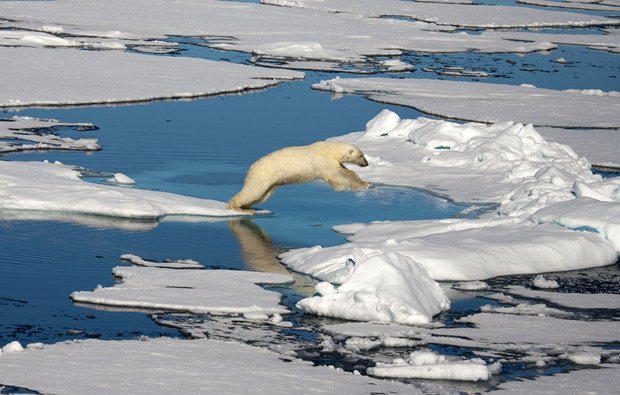Arctic odyssey: polar bears

AG picture editor Chrissie Goldrick shares her experiences on the the AG Society expedition to the Arctic.
LAUNCH THE GALLERY
YOU CAN GO FOR days on these voyages and never catch sight of the big drawcard. But it’s our first full day and our luck’s in as we cruise up Lilliehöök fjord towards the 12 mile-wide terminus of Lilliehöök glacier.
A shout goes up and within a minute or two the passengers are thronging the bow, peering through binoculars or craning to see a tiny moving spot on the shore, our first polar bear. We are ready and lining up in no time for the Aurora Expeditions zodiac – only our second go and we have it down to a fine art. We get close enough to see the bear clearly, without the need for binoculars. It’s thrilling.
Svalbard’s polar bear (Ursus maritimus) population is thought to be between 2000 and 3000 animals, but it’s hard to accurately pin down numbers as these creatures cover a big geographical range.
During the long, dark winter when pack ice surrounds Svalbard, the polar bears can move easily between land masses, traversing the pack ice. They are our largest carnivore weighing up to 800 kg and measuring between 2.5-3 m in length. The harsh Arctic environment with little food available on land has adapted the polar bear to feed almost exclusively on marine mammals, particularly seals. They are long-lived with low reproduction rates. Females breed from 5 years of age, giving birth to one or two young that they will rear to 2 years of age, but mortality rates are high for cubs in this competitive and unforgiving environment.
IN RECENT TIMES, the polar bear has become the ‘canary species’ or indicator of the effects of climate change on animal biodiversity. It’s predicted that ice cover surrounding the North Pole will disappear within this century and that the season in which ice forms will shorten.
Resulting habitat reduction will have a seriously detrimental effect on bears. Shrinking pack ice caused by warming oceans reduce the bears’ ability to move across the huge distances necessary to elicit enough food for this big eater who can travel up to 80 km a day in search of seals. Weather patterns are also being affected; reduced snow cover makes it harder for females to dig the deep dens into the snow where they give birth. Less sea ice also isolates bear populations leading to inbreeding and increased risk of genetic mutation.
The bears here are not living within a formal nature reserve, although they have been protected since 1973, but are wild in the fullest sense of the word. They pay an occasional visit to the town of Longyearbyen and anyone travelling beyond the limits must carry a rifle. Approximately one bear is shot annually in self-defence and the Sysselmann’s (Governor of Svalbard) office runs a public information campaign and enforces rules designed to protect both bear and human. Any shooting is fully investigated and there are penalties for irresponsible or careless behaviour that might lead to the killing of any bear.
Over the ten days aboard Polar Pioneer, we see a further 15 bears – a staggering eight of them in one location at Holmiabukta, where a year-old whale carcass washed up on the shoreline provides a reliable food source. Two mothers with cubs are among the feeders and we’re enthralled to witness the mothers teaching the little ones to eat the cub-sized pieces torn from the carcass. A further five bears are seen on the pack ice to the north of the island group of Sjuoyane, one feeding on a recent seal kill.
The bears’ creamy-yellowy-white coat stand out from the blue-white hue of the pack ice and they are easily spotted. One bear showed a great deal of interest in us and spent an hour or more in close proximity to the Polar Pioneer giving us a great opportunity to study the magnificent creature close up. The bears move deftly across the ice, leaping between the floes where necessary, their great bulk proving no problem at all. They move fast, with a huge stride and cover big distances quickly. Only once did we encounter a bear on land while we were also on land some distance from our inflatable rafts, but that one watched us with indifference as we evacuated the beach and returned to the Polar Pioneer in haste.
LAUNCH THE GALLERY
MORE INFO
Read other blogs in this series
AG Society Arctic expedition 2011
Aurora Expeditions

